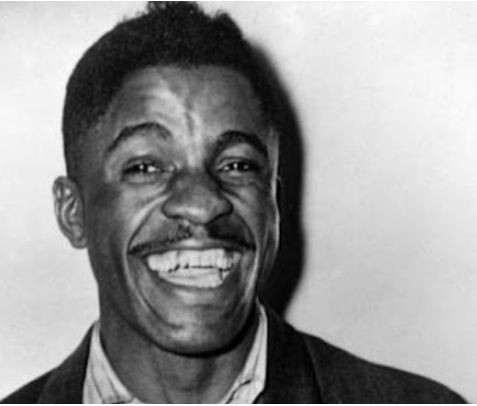A Site About Dead Musicians and How They Got That Way

Sonny Boy Williamson I: Age 34 | Cause Of Death: BRAWLING/ BEATING
John Lee Williamson
(b. 30 March 1914, Jackson, TN, d. 1 June 1948, Chicago, IL)
Williamson learned harmonica as a child, and as a teenager in Tennessee was associated with the group of musicians around Sleepy John Estes. Sonny Boy had been in Chicago for three years when he came to record in 1937, but his early records retained the plaintive sound, and often the songs, of Estes’ circle. From the first, however, Williamson was an unmistakable musician, partly through his Tongue-tied singing style (probably a controlled version of his stammer), but chiefly for his harmonica playing. He worked almost invariably in ‘cross-note’ tuning, in which the key of the harmonica is a fourth above that of the music. This technique encourages drawn rather than blown notes, thus facilitating the vocalization, slurring and bent notes that are basic, in conjunction with intermittent hand muting, and various tonguing and breath control effects, to most blues harmonica playing. In his time, Williamson was the greatest master of these techniques, and of blending voice and harmonica into a continuous melodic line; he reached a peak of technical and emotional perfection that sets the standard and defines the aesthetic for blues harmonica players to this day. Williamson recorded prolifically, as both leader and accompanist. His music developed continuously, and by the end of his life featured a powerful ensemble sound with amplified guitar. Williamson was equally adept at the expression of emotional intensity and the provision of rocking, exuberant dance music; in the musically rather bland years of the ’40s, he preserved these qualities in the blues of Chicago, as if to prophesy the changes that were taking place by the time of his death. Universally liked, despite his enthusiasm for fighting when drunk, Williamson was greatly respected by his fellow musicians; he was enormously influential on more than one generation of harmonica players, from his contemporaries like Walter Horton and Drifting Slim to youngsters like Junior Wells and Billy Boy Arnold, and a remarkable proportion of his songs became blues standards. In Forrest City Joe, he acquired a devoted imitator, but perhaps the best indication of John Lee Williamson’s importance, notwithstanding the monetary considerations that were doubtless his initial motivation, was the stubborn insistence of Sonny Boy Williamson, a harmonica genius in his own right, that he was ‘the original Sonny Boy Williamson’. On 1 June 1948, Williamson’s life came to a tragic end following a serious assault.
— In 1948 upon leaving the Plantation Club in Chicago after playing a gig, he was mugged and beaten. He died of a fractured skull and other injuries on June 1, 1948 and is buried in Jackson, Tennessee.
